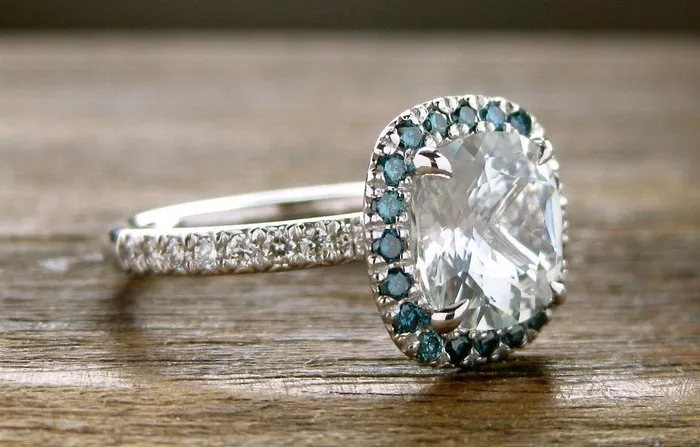Loose yellow sapphires are renowned for their vibrant hues and mesmerizing beauty. As a jewelry appraiser, understanding the factors that can influence their color stability is crucial. This article aims to provide a comprehensive introduction to the topic, exploring whether the color of loose yellow sapphires can change and the science behind this phenomenon.
Introduction to Yellow Sapphire Color
Composition and Color Origin
Yellow sapphires belong to the corundum family of gemstones, which includes rubies and all other colored sapphires. Their yellow hues are primarily caused by the presence of trace elements, primarily iron (Fe) and sometimes titanium (Ti) or chromium (Cr), within the crystal structure. These impurities absorb certain wavelengths of light, allowing the yellow color to be perceived.
Natural vs. Heat-Treated Sapphires
Natural yellow sapphires can exhibit a wide range of shades, from pale yellow to vivid orange-yellow. However, many yellow sapphires undergo heat treatment to enhance their color. This process involves heating the gemstone to high temperatures, causing the trace elements to rearrange within the crystal, thereby intensifying or altering the color.
Factors Influencing Color Change
Heat Treatment
Heat treatment is the most common method used to enhance the color of yellow sapphires. While it is a permanent process that usually does not reverse over time, there are cases where the color may slightly shift due to residual heat or stress within the crystal structure. However, these changes are generally minimal and not noticeable to the unaided eye.
Exposure to Light
Long-term exposure to ultraviolet (UV) light can affect the color of some gemstones, but yellow sapphires are relatively resistant to this phenomenon. Their color stability is due to the stable nature of the trace elements responsible for their hue. However, prolonged exposure to intense sunlight or artificial UV sources may cause slight fading in some cases, particularly in lighter shades of yellow.
Chemical and Physical Alterations
Certain chemicals, such as acids or bleach, can cause color changes in gemstones. While yellow sapphires are relatively resistant to chemical alteration, prolonged exposure to harsh chemicals or abrasive materials can scratch or dull the surface, affecting the perceived color. Physical alterations, such as fracturing or breaking, can also alter the internal structure of the gemstone, potentially causing color shifts.
Environmental Factors
Temperature changes can cause slight expansions and contractions within the crystal structure of gemstones. While yellow sapphires are relatively stable, extreme temperature fluctuations may cause minute stress fractures, which could potentially affect the color. Additionally, changes in humidity can cause swelling or shrinking of the gemstone’s inclusions, which might also alter its appearance.
Identifying and Assessing Color Changes
Visual Inspection
The most straightforward method of assessing color changes in yellow sapphires is through visual inspection. A trained gemologist or jewelry appraiser can compare the gemstone under controlled lighting conditions to its original appearance or to known standards. However, subtle changes may be difficult to detect without specialized equipment.
Spectroscopic Analysis
Spectroscopic analysis, such as UV-Vis spectroscopy, can provide detailed information about the absorption patterns of light within the gemstone. This technique can detect changes in the absorption spectrum, which may indicate alterations in the color-causing impurities.
Gemological Testing
Gemological testing labs offer services to assess the color stability of gemstones. These tests may include heating the gemstone to extreme temperatures to observe any color changes and then analyzing the results. However, such tests are destructive and are not recommended for valuable gemstones unless absolutely necessary.
Preventing Color Changes
Proper Care and Maintenance
To maintain the color stability of yellow sapphires, proper care and maintenance are essential. Regular cleaning using mild soap and water, avoiding harsh chemicals, and storing the gemstone in a soft cloth or jewelry box can help prevent damage and maintain its appearance.
Protecting from Environmental Factors
Keeping yellow sapphires away from extreme temperatures and humidity fluctuations can help prevent stress fractures and inclusion swelling. Additionally, avoiding prolonged exposure to intense sunlight or artificial UV sources can minimize fading.
Professional Services
For high-value gemstones, consulting a professional jeweler or gemologist for regular inspections and maintenance can provide peace of mind. They can identify potential issues and recommend appropriate solutions to maintain the gemstone’s integrity and color.
Conclusion
In conclusion, the color of loose yellow sapphires is generally stable and resistant to changes over time. However, various factors, such as heat treatment, light exposure, chemical alterations, and environmental conditions, can potentially affect their hue. By understanding these factors and taking appropriate care and maintenance measures, gemstone owners can preserve the vibrant beauty of their yellow sapphires for generations to come.
Related topic:
- What Determines the Best Quality Yellow Sapphire Price? 5 Factors to Consider
- Are There Risks with Beryllium Treated Yellow Sapphire Gems?
- What Should You Know Before Buying Beryllium Treated Sapphires?


